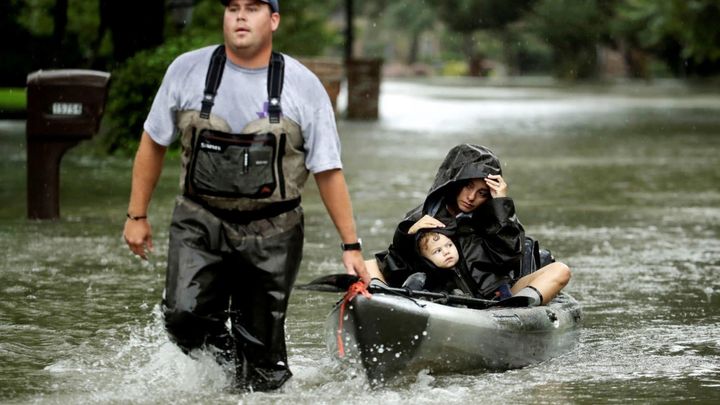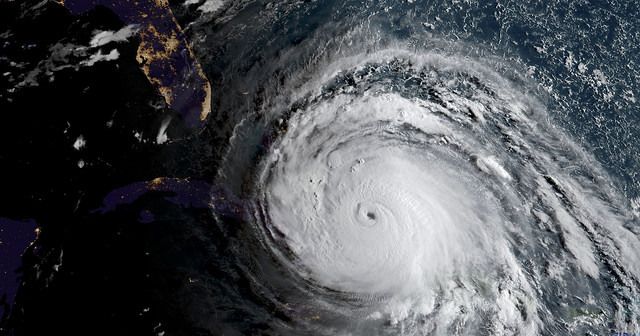
Hurricanes Harvey and Irma may have caused up to $200 billion in damage in the U.S.
The arrival of Hurricanes Harvey and Irma has left communities in the United States and the Caribbean reeling. In times of disaster, it is both common and necessary for communities to thrust themselves into the rebuilding process, aided by a number of private and public organizations. But the absence of coordinated relief efforts or a clearly defined action plan threatens to stall this recovery, leaving cities, towns, and even entire regions suffering for years after.
How are communities expected to rebuild in the wake of a hurricane? What challenges stand in their way and how do they properly allocate their resources to best serve local residents? To answer these questions, my NYUSPS Urban Lab colleague Aria Bendix and I caught up with Corinne Packard Beasley, a faculty member at the NYU Schack Institute of Real Estate and an expert on post-disaster reconstruction.
What is the first step that cities should take to rebuild their communities? Do they start with power lines, transportation, or housing?
A lot of people initially think housing is most important, but it’s actually not. Generally you find that the most important things to people are community centers, places of worship, and schools. Obviously, you can’t have those things without infrastructure in place, so the government’s first responsibility is to get infrastructure up and running—including power water, sewage, and public transportation. Often, the government gets so involved in people’s personal houses that it actually slows down the process.
The other thing that can be detrimental—especially in third-world countries—is when governments try to give out free supplies. When international companies come in and give out free food and tents, that actually warps normal supply and demand economics. I always tell people after disasters to be really cautious about whom you’re giving money to and know what they’re doing with your money.
How can the government, NGOs, and members of the private sector work together to coordinate their efforts?
It’s inevitable that there will be some missteps in the beginning. Because disasters tug on people’s emotions, people don’t act rationally. In the absence of a normal governmental structure that’s organizing things, you have a lot of NGOs coming in just doing what they do best. For example, you might have an NGO that builds houses and doesn’t care where the city is building schools or fixing roads. So there should be some sort of organizational structure that includes governmental and non-governmental organizations. Sometimes these are consortiums that are created by a third party, and sometimes an organization like The Clinton Foundation or an academic institution will help be a facilitator of coordination. [But] it’s not going to be quick. Even with [Hurricane] Sandy in New York, people are still waiting for money for their houses to be rebuilt. It’s going to be a multi-year process, so coordination is key for long-term rebuilding.

Hurricane Irma is the most powerful storm ever recorded in the Atlantic.
How should devastated communities like Florida and Houston go about constructing new housing? Do zoning or building codes get in the way of this construction?
Luckily for Houston, they’re the one city in the entire country that does not have a zoning code, so this might actually be helpful for their rebuilding efforts. Florida is probably very close behind in terms of its lack of regulation, so that won’t be as big of a barrier as it was in New York, for example. In a place like Haiti—the absolute extreme—they don’t even have building codes, let alone zoning. The downside to that is that people are going to build houses that are not hurricane or earthquake resistant.
Usually when these types of storms happen, people really look at the building and zoning codes and reassess what’s appropriate. Sometimes it takes a big storm like this, unfortunately, to rethink that. That’s when urban planners and real estate developers come in, because you have to think about what a town looks and feels like. If houses are built ten feet up on stilts, it kind of ruins the sidewalk atmosphere.
How can cities make themselves more prepared for hurricanes in the future?
They have to, in a coordinated effort, think about rebuilding neighborhoods and communities and not just individual houses. The government’s role is to think about the bigger picture and how you rebuild a community that’s stronger. The government shouldn’t just be responsible for building protective infrastructure, which isn’t always wise. They should think about building neighborhoods that integrate soft infrastructure that prevents flooding and new zoning codes that prevent houses from being inundated with water.
What happened after Sandy was that the government was hyper-focused on providing money to individuals to rebuild their houses. In the long term, that strategy is not going to help prevent this [devastation] from happening again. But you can only prepare so much. The government can’t start making rules that make it financially impossible for people to rebuild, like telling everyone they have to spend four times as much money to rebuild their house. Communities also need to be involved in this process.
What is the financial impact of hurricanes and other natural disasters on the real estate market? Do you expect the demand for coastal homes to decline following the hurricanes?
It's not a black-and-white answer. Generally, if regulations (i.e. building codes, zoning codes, etc.) increase post-storm, then the cost of housing along the coast would go up. In normal situations, this would result in demand going down—however, waterfront property is unique. People will always want it because there is an aspect to being on the water that no economist can explain. What will more likely happen is that urban planners and governments will need to manage development in high-risk areas and people will have to be innovative and creative about how to live smartly along the coast.
Aria Bendix contributed to this article. She is a writer for the NYUSPS Urban Lab. Her work has appeared in The Atlantic, CityLab, Bustle, and The Harvard Crimson, among other publications.
